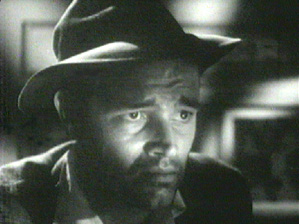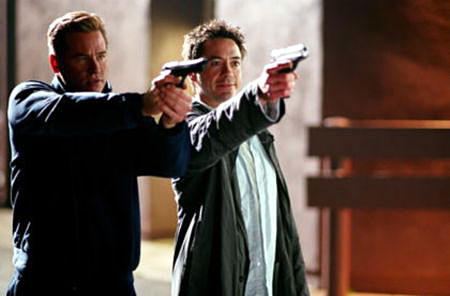
In his article, “Questions of Genre,” Steve Neal discusses the genesis of genres: what distinguishes one genre from another and the role of verisimilitude in identifying different aspects of genres. These probabilities that occur within each genre make it more familiar, helping the audience draw conclusions about the film. For example, if a picture is classified as a musical, the audience will not be completely freaked out when every single character simultaneously breaks out into song and also happens to be a professionally trained dancer. If one were watching a movie classified as film noir and this occurred, the audience would have no idea what to make of it, and it would seem out of place. Because the audience would already be aware of the musical classification, the story being told in song will be normal and expected.
In classifying genre, the media and the studios are outlining a narrative image, a description of what to expect. These expectations are as much attributed to plot as they are to moral messages influenced by the time in which the movie is set: Western films reflect patriotic, good-natured hope; film noir expresses the untrustworthiness and pessimism felt in the forties and fifties While in some ways, genres help the industry, attracting viewers who are drawn to different messages and experiences to specific pictures, there are many dangers to classifying movies in such cut-and-dry terms. By forcing every film into a specific genre, it leaves the chance of leaving viewers disappointed, even shocked, at the film’s end. For example, Georgia Rule (2007) was advertized as a comedy-drama, and often, simply a comedy. With a cast including Jane Fonda, Felicity Huffman and Lindsay Lohan, the film attracted a certain audience expecting to see a light, humorous movie. However, the majority of the film is very serious, dealing with issues such as child abuse and drugs, thus leaving the viewers confused about the original intent of seeing the movie. Is it a comedy? Is it a drama? Is it both? What implications do each of these brands have upon the type of audiences the films will pull? Many films, in fact, use this debate on genre ironically, ultimately laughing in the faces of the people who try and classify them.

The film Kiss Kiss Bang Bang (2005) spans a wide spectrum of genres. It is a comedy, a film noir, a drama, a mystery, a black comedy, a satire, an almost anything. What do we do with this type of film? What was Shane Black trying to convey with the release of this parody? The plot, as well as the inspiration for the film, (a pulp novel by Brett Halliday called “Bodies Are Where You Find Them”), pull many thematic, dramatic and iconographic components from the film noir legacy. As discussed in Schrader and Neal’s articles, the disillusionment that followed the war was a prime inspiration for this dark, pessimistic genre.
Lighting, music and certain icons are the key to film noir, and Black plays upon each of these components in order to replicate a new spin on this genre. The contrast of black and white, as well as the use of shadows created suspicion and paranoia in the narrative space of a noir film. While Kiss Kiss is filmed in color, many scences implement the use of shadows and the images seem almost black in white. When Perry (Val Kilmer) and Harry (Robert Downey, Jr.) shoot the guard outside of the mental hospital, the scene is quite dark and almost appears as if it is filmed in black and white. Later, in the chase scene, the streets are smoggy and dark, resembling a film such as Out of The Past or any hard-boiled detective story.
In fact, much of the movie seems to reflect the pessimism of the film noir genre; from the impromptu detective striving to find justice, to the quick, witty, monotonous dialogues, right down to the romance between the unlikely detective and the femme fatale. However, the entire film is tainted by Harry’s comedic narration and the overly nostalgic jazz music that scream satire. Black uses icons of the noir era, (such as dramatically placed cigarettes), and flips them in such a way that you know that he is making fun of the genre, and maybe genres in general. In addition, Black completely changes the pessimistic noir ending, replacing it with a happy, Hollywood ending; he allows the characters to find justice, creates a surviving love connection between Harry and Harmony (Michelle Monaghan), has an ironic death toll of sixteen (which perfectly coincides with the pulp novel plot line) and even brings Perry back to life (which he criticizes by having Harry snidely remark on the classic Hollywood happily ever after).
Kiss Kiss Bang Bang is brings to light the dangers of shutting movies into corners; Black shows us a film that cannot possibly be characterized, and therefore escapes the scope of categorization. In the end, the film appeals to more audiences because it cannot be contained within just one genre, but instead a multitude of them. As Neale points out, the only way to solve the problems of genre is to treat it as a process, viewing a genre not as a fixed entity, but instead a malleable subject that can, and is, constantly changed by outside influences such as media, social relations and history.


